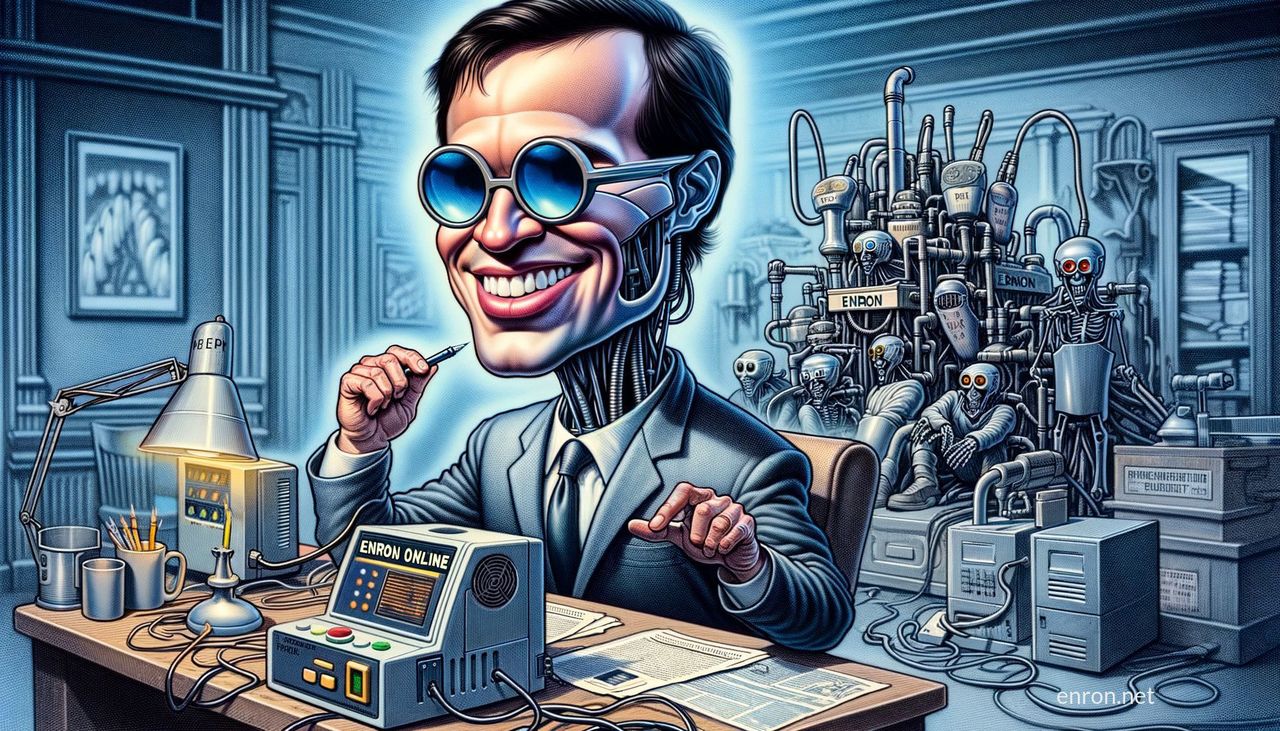Enron Online: The Digital Revolution That Reshaped Energy Trading

Uncovering the Ambitions and Anomalies Behind the Pioneering Platform
The Creation of Enron Online: Revolutionizing Energy Trading with Digital Innovation
When Enron Corporation launched EnronOnline in November 1999, it marked a revolutionary step in the world of energy trading. This online platform promised to transform Enron into the leading force of the digital age in a sector traditionally dominated by face-to-face deals and complex, opaque transactions. As an ambitious leap into the rapidly evolving internet economy, the platform's inception, growth, and eventual fallout became a defining chapter in the rise and fall of Enron.
Setting the Stage: Enron’s Ambitions and the Need for Change
In the late 1990s, Enron had already begun to reinvent itself. Originally a gas pipeline company, it had grown into a diversified entity with ventures extending to electricity, water, and broadband services, among others. By the mid-1990s, energy trading had become a core part of its business. However, the energy market's traditional trading environment was cumbersome and opaque—a maze of phone calls, negotiations, and human brokers. Enron’s leadership, particularly CEO Jeffrey Skilling and Chairman Kenneth Lay, envisioned an unprecedented paradigm shift: an online trading floor to outpace and outshine its competitors.
The Launch of EnronOnline: A Digital Pioneering
On November 29, 1999, EnronOnline went live, capturing headlines and the fascination of the trading community. As one of the first internet-based trading platforms, it allowed users to buy and sell a wide range of products—natural gas, electricity, and eventually broadband and weather derivatives—directly via the internet.
The interface was user-friendly and transparent, providing real-time pricing information and enabling instant transaction execution. It was a stark contrast to the traditional way of doing business, reducing transaction costs, trade times, and the need for intermediaries. Traders could now conduct business in a matter of seconds, rather than the hours or days it might have taken before.
The Man Behind the Innovation: Louise Kitchen
Much of the credit for EnronOnline’s creation belongs to Louise Kitchen, an English oil trader who was recruited to Enron for her pioneering thinking. Kitchen and her team worked tirelessly to refine the platform, constantly enhancing its features and expanding its capabilities. By coupling her innovative mindset with Enron’s aggressive drive for market dominance, Kitchen spearheaded an initiative that placed vast amounts of market information at traders' fingertips—eliminating the information asymmetry that had long benefited the company’s brokers.
Impact and Proliferation: EnronOnline’s Dominance
Within months of its launch, EnronOnline was handling billions of dollars in trades daily. It quickly became the largest e-commerce site in the world by transaction volume, dwarfing the likes of eBay and Amazon in terms of sheer monetary value. More than 1,800 products were listed on the platform, cementing Enron's role as the quintessential middleman in the energy market.
The platform's success drew interest and adoption from a range of industry players looking to mimic Enron’s digital success. EnronOnline was seen as not just a digital frontier, but also the embodiment of Enron’s innovative and daring corporate culture.
Behind the Curtain: The Hidden Flaws
Despite its outward success, EnronOnline harbored fundamental flaws that mirrored broader issues within Enron Corporation. For one, the platform’s transparency was a double-edged sword. While it provided users with real-time pricing and transaction data, it also revealed Enron’s own aggressive trading practices. More critically, the digital system masked financial machinations underpinning Enron’s operations.
The platform's business model relied heavily on the company acting as the principal party in many transactions, assuming both buyer and seller roles. This practice allowed Enron to inflate transaction volumes and manipulate market perceptions of liquidity and depth. EnronOnline’s expansive reach helped mask the company’s mounting debt and increasingly speculative business activities.
The Downfall: From Innovation to Infamy
As the cracks in Enron’s financial practices began to show in 2001, EnronOnline, once hailed as a model of digital innovation, became a symbol of the company’s ultimate demise. When Enron declared bankruptcy in December 2001, the platform was abruptly shuttered, and its meteoric rise and fall became a cautionary tale of unchecked ambition and technological overreach.
The demise of EnronOnline brought scrutiny and legal repercussions, leading to regulatory reforms aimed at preventing such market distortions in the future. The platform that once epitomized the potential of digital markets became a stark reminder of the risks inherent when ethical boundaries are overshadowed by the pursuit of innovation.
Legacy and Lessons
The story of EnronOnline endures as a paradox: a revolutionary technological achievement stained by corporate malfeasance. It demonstrated the power and potential of digital tools in transforming traditional markets, laying the groundwork for future online trading platforms that would operate with more robust safeguards.
EnronOnline’s creation is a testament to Enron’s forward-thinking vision and its failure to temper innovation with integrity. As such, it continues to be studied not only as a technological milestone but also as a pivotal lesson in corporate governance and ethical responsibility in the digital age.